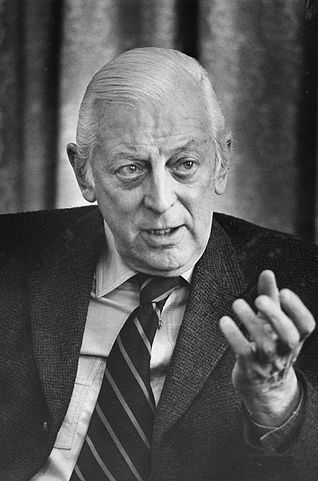The Fight to Clear Hiss’s Name (1950s-1980s)
The Hiss case helped launch the 1950s McCarthy period, a decade of fear and distrust. Senator Joseph R. McCarthy’s anti-communist crusade, during which 10,000 Americans lost their jobs, began less than three weeks after Alger Hiss’s conviction in 1950. The Hiss case became a mirror in which America saw disquieting reflections of itself during the early years of the Cold War. The British journalist, Alistair Cooke, who in 1950 published the first book about the trials of Alger Hiss, called it A Generation on Trial. “The impact of the Hiss case on the movement of anti-communism to the center of the political stage,” the historian James V. Compton wrote in 1973, “can scarcely be exaggerated.”
The crux of the debate was clear: If Alger Hiss – who throughout his life steadfastly maintained his innocence – were guilty as charged, and passed government documents to the Soviet Union when he worked for the United States State Department in the 1930s, this would show that President Franklin D. Roosevelt’s New Deal had been infiltrated and compromised by communist spies. If Hiss was innocent, his conviction had been a historic miscarriage of justice.
Hiss, who died at the age of 92, had just turned 50 when he was released from prison in 1954, and he devoted much of the rest of his life to correcting a miscarriage of justice that had distorted American history. This section of the website looks at some of the often-controversial steps Hiss took over the next thirty-five years in his never-faltering quest for vindication, and at the evidence he uncovered. Along the way, as it turned out, he also had to contend with well-publicized opposition (such as the 1978 publication of Perjury: The Hiss-Chambers Case, by Allen Weinstein, a book widely praised for reaffirming Hiss’s guilt, and the posthumous 1984 awarding of the Medal of Freedom, the country’s highest civilian honor, to Whittaker Chambers by President Ronald Reagan).
In 1952, while still in jail, Hiss had already moved for a new trial. Many of the issues raised then are covered in the previous section of this website (see, for instance, the affidavits presented with “The Typewriter,” in the previous section of this website, “The Hiss Case (1940s)”). But another key issue that was examined by the 1952 motion had to do with Whittaker Chambers’ break with the Communist Party. Beginning in 1939, Chambers had repeatedly said in statements and under oath that he left the Communist Party and went into hiding in 1937. Then, in November 1948, he changed the date to April 1938. This was important because he then said that Alger Hiss had given him copies of State Department documents in April 1938. It was only shortly after Hiss’s conviction that the defense uncovered evidence indicating that Chambers had in fact left the Party in 1937. Further information on the subject came to light in the 1970s, when FBI files released to Hiss under the Freedom of Information Act indicated that the government had evidence supporting the idea that Chambers’ break with the Party had come in 1937.
The 1970s FOIA releases made possible Alger Hiss’s renewed legal challenge to his conviction, his 1978 petition to a federal court for a writ of coram nobis to overturn his guilty verdict because of prosecutorial misconduct. The 1970s also saw Alger Hiss’s return to another court: In 1975, the highest court in Massachusetts, the Supreme Judicial Court, unanimously voted to readmit him to the bar, the first time in the history of the Commonwealth of Massachusetts that a disbarred lawyer had ever been reinstated.

